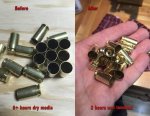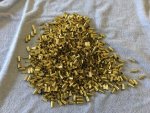I have been tumbling my pistol brass for years using a Dillon vibratory tumbler. Results are good but now that I'm getting into .308 reloading I'm thinking about a wet tumbler to use with stainless media.
I noticed when making .300 AAC brass the vibratory tumbler media just doesn't get inside the case or primer pocket very well.
Which tumbler are you guys using?
Any input would be appreciated.
I noticed when making .300 AAC brass the vibratory tumbler media just doesn't get inside the case or primer pocket very well.
Which tumbler are you guys using?
Any input would be appreciated.



